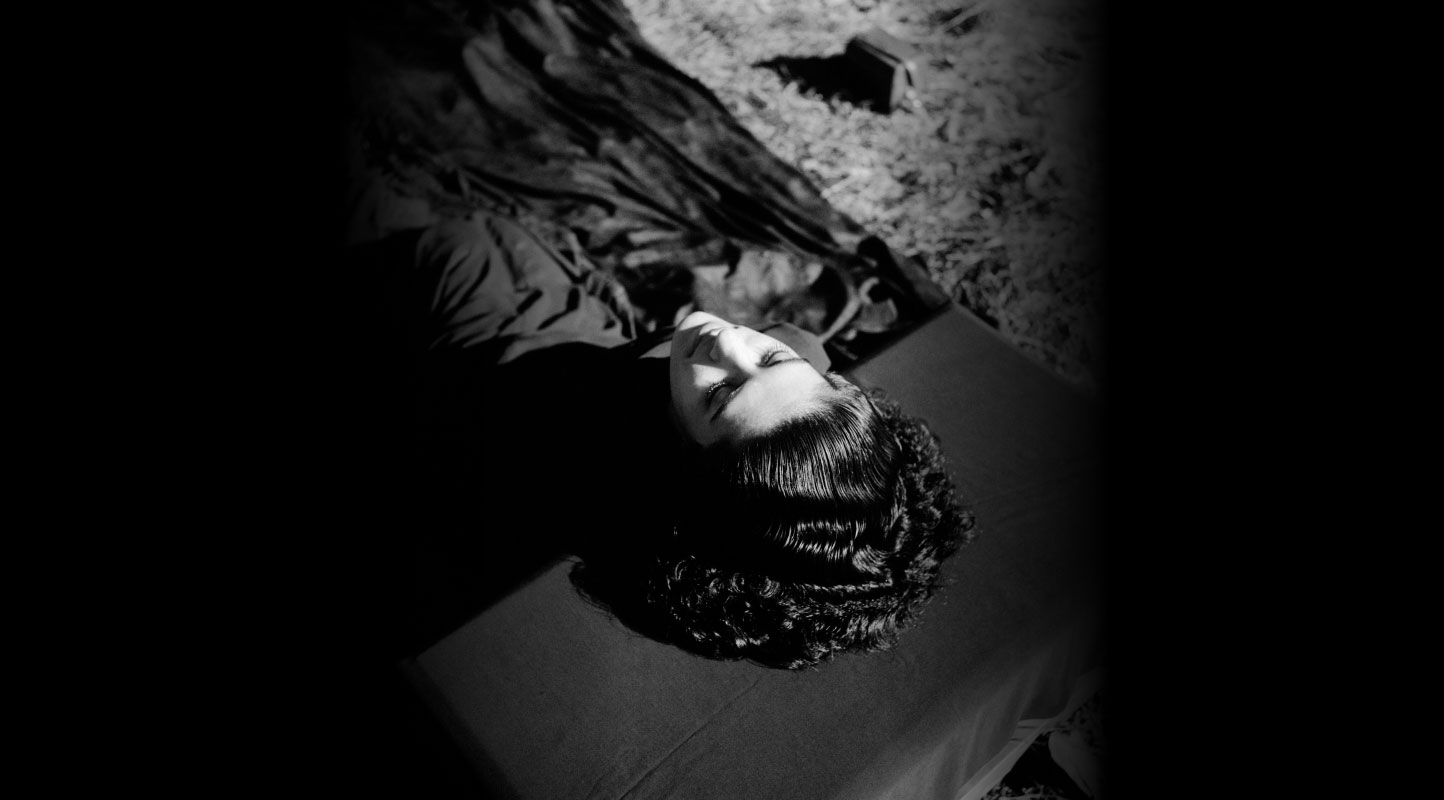Community Building at the Chennai Photo Biennale
Photographers have often collectively worked with a creative community to develop their practice or worked with particular groups of people to facilitate their expression. This year, the Chennai Photo Biennale (CPB) highlights the works of photographers building a community and creating work from it. Love and Light marks Sunil Gupta’s first retrospective in India—never has he exhibited such a large segment of his work in one place, he said, as we spoke over the phone. Looking at making art during a period of criminalisation of queer bodies in Sunil Gupta’s oeuvre, one is also urged to look at the socially-constructed idea of the criminal and question our gaze towards them as somehow ‘different’ from us, through the project Art in Prisons facilitated by Sumanasa Foundation in collaboration with Project 39A. Thus, CPB highlights the renegade ways that art enters spaces which, more often than not, focus on regimental ways of being, like prisons and, unfortunately, schools. It is through projects like I Play at School, which are lens-based works created by children, that these voices find their place on the podium. And, in the case of Putting Ourselves in the Picture by the Fast Forward Collective, which trains migrant and non-binary women in techniques of photography, it also creates an ecosystem for the survival of such marginalised identities within such systems.
.png)
By Rainbow Sisters, as part of Putting Ourselves in the Picture. (©Autograph and Fast Forward. Image courtesy of Anna Fox.)
Upasana Das (UD): How did you approach teaching the children principles of photography for the project I Play at School? What role does the idea of community play in these projects? How did this inform your curatorial vision?
Sakshi Shraddha: As part of our work with the Chennai Photo Biennale Foundation, we begin by simply having children observe the building blocks of visual art around them. This includes noticing lines, shapes, patterns, colours, where the light falls and where there are interesting shadows. We encourage them to document and think about which of these they would like to have in their frame. After this, we teach framing—to be intentional and conscious of what feels right in the frame and what does not. We do this by asking questions, such as: "Do you prefer this photograph with the chair included or without?" If they say without, we encourage them to frame the scene again with the chair excluded. To help students make a series of connected photos or to use photography to tell a story, we also show them a variety of examples. We ensure that we include examples that are relatable, such as work by other children, or by photographers from the same neighbourhood, or with themes such as home, school life, pets, friends and family, etc. Our educators have documented a few memories from classes when students were learning to make a photo series. So, there are photos of a student named Thayanban (Grade 7) photographing a background, drawing a circle to make a plate, placing food emojis on it and pretending to serve the food. Other photographs show Krish and Yashwanth of Grade 5 creating a photo series about a plant growing out of a hand; Swathi, another student from the same class, carrying a box around school and making it look like a bus to create the impression of it travelling on the campus; and G. M. Pravasri of Grade 5 arranging stones to create a frame of her own for the flowers and leaves she wanted to capture.
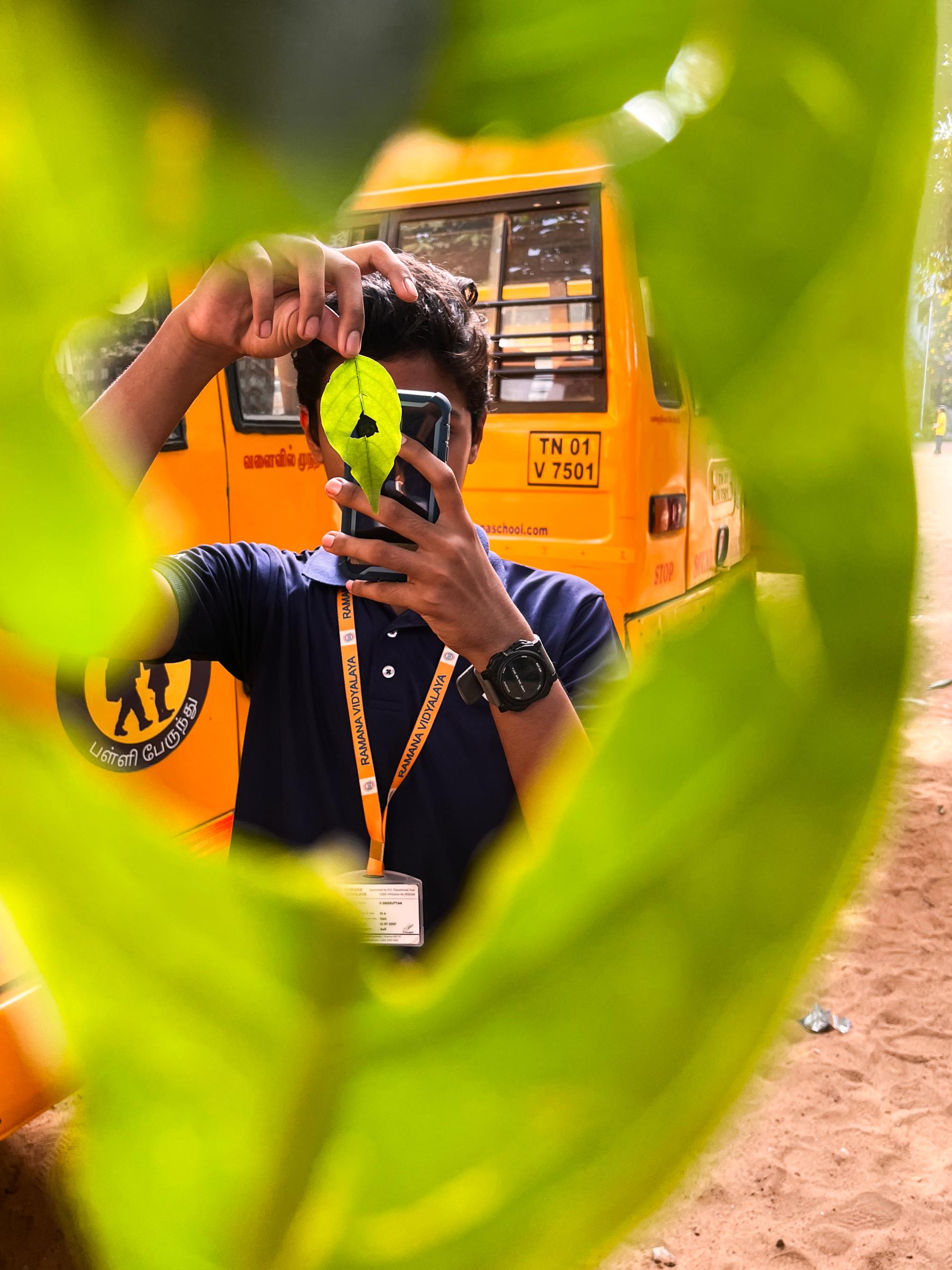
From the series I Play at School. (Deveshwar, Class 12, Ramana Vidyalaya. Image courtesy of CPB.)
The idea of community plays a big role here. For one, the students collaborate among themselves and are inspired by each other's work. The school community is the first playground for their journey with photography. When they move beyond the basics to documentation and storytelling, the first subjects that often occupy their frames are the people they love, who are a treasured part of their everyday life. This includes friends, favourite teachers, vendors and shopkeepers they buy snacks from, siblings and parents. Their photographs too are encouraged and inspired by the love they share with the members of their community.
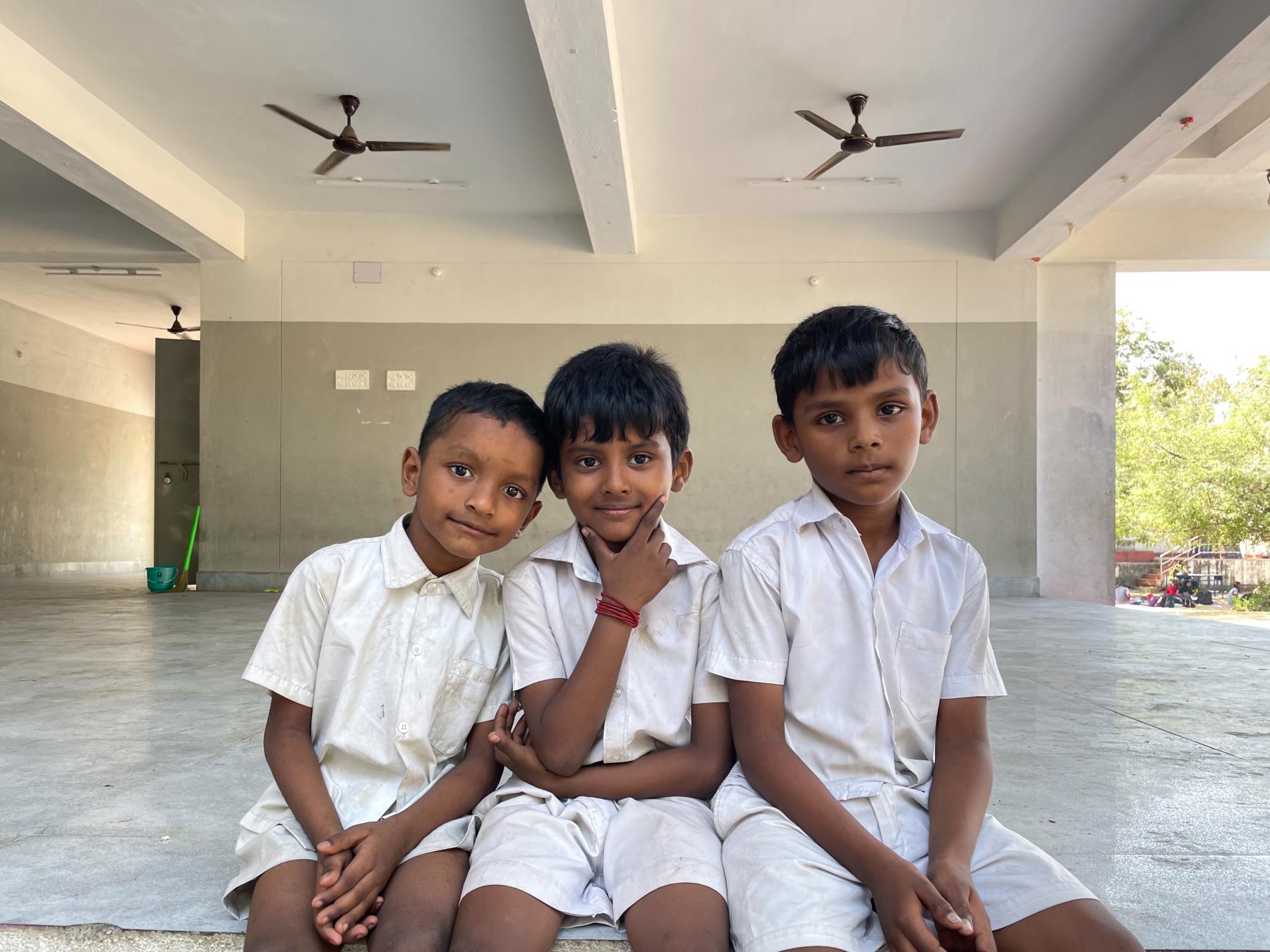
From the series I Play at School. (J. Dhivyesh, Class 5, CPS Thiruvanmiyur. Image courtesy of CPB.)
With regard to curating the images, at the end of a workshop, we step back and look at all the thousands of photos students have taken. A majority of them tend to be light-hearted photographs of themselves and their friends playing around, either on the playground, in the corridors, or in the middle of collaborative attempts. When we curated under different themes (such as neighbourhood or coastal life) in the past, these playful photos were often missed out. So this time, our curation came from a desire to showcase what children shoot when they are having fun and when they are not shooting a particular concept. These were the first instinctive photos they took when they switched on their phones. These are moments of play because the children took these images simply because it made them happy.
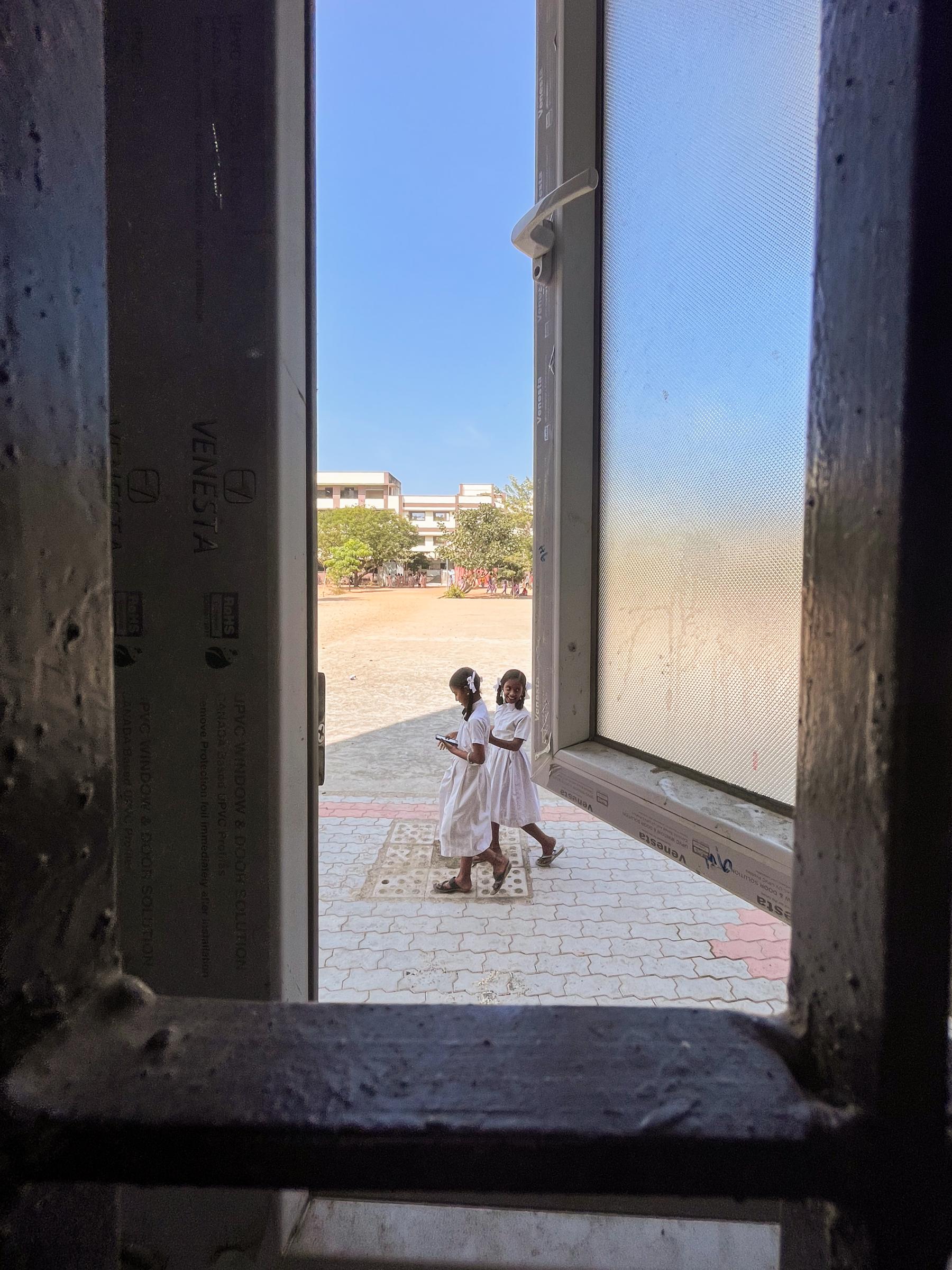
From the series I Play at School. (P. Mahashree, Class 5, CPS Thiruvanmiyur. Image courtesy of CPB.)
UD: How did you begin working with this group of women for the project? How did you propel them to express themselves first and then choose the photographic medium as their means of expression?
Anna Fox: Fast Forward: Women in Photography is a research project based at the University for the Creative Arts in Farnham UK. It was started in 2013 by Karen Knorr and me. Our first event was a conference at the Tate Modern in 2015, and since then we have continued to develop project by project. In 2021, I was awarded an Equality, Diversity and Inclusion Engagement Fellowship by the Arts and Humanities Research Council (AHRC). This fellowship enabled our collective, Fast Forward, to develop Putting Ourselves in the Picture. This project supported a community of marginalised women (migrants and refugees) and non-binary people in collaboration with five organisations, across the UK, recognised for their influential endeavours in photography and education, namely Autograph ABP, Impressions Gallery (Bradford), National Galleries of Scotland, Women for Refugee Women and Work Show Grow.
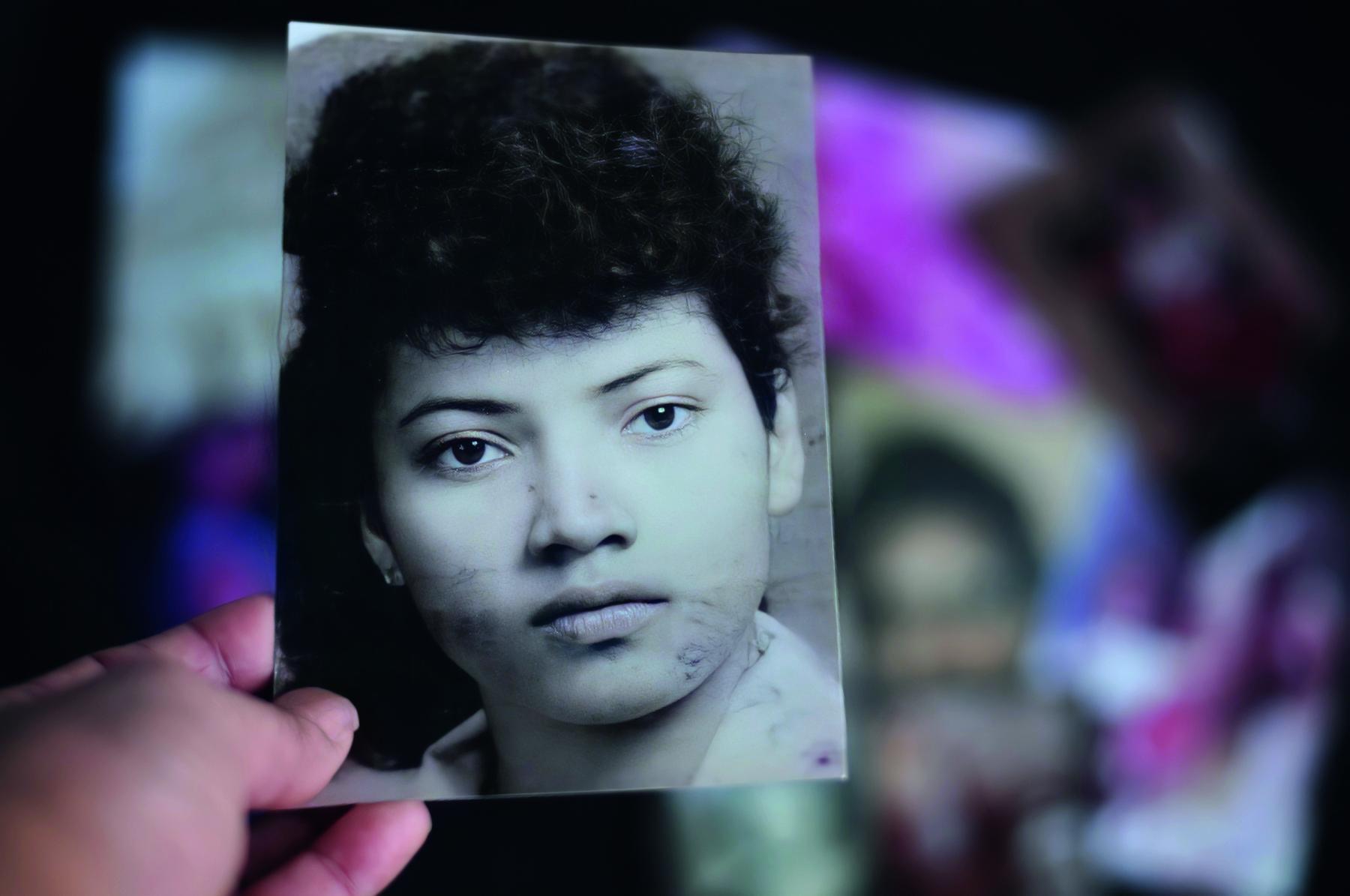
Ana from the series "Putting Ourselves in the Picture" (©Impression gallery and Fast Forward. Image courtesy of Anna Fox.)
The main aim of the project was to allow them to dictate their own stories and to contradict the monosyllabic narratives of the media and popular press that all too often have portrayed them as victims. Through a series of innovative workshops and mentorship activities organised by the partners, this project developed not only their skills and knowledge of photography but also the participants’ confidence. The resulting outputs—including photographs, poetry, moving images and podcasts—are set to educate us all by increasing awareness of women’s unheard life stories using photography as a tool of empowerment and as a storytelling practice. The mentorship process included discussions, workshops and, most importantly, group sessions where everyone could share their work and develop their ideas collaboratively in a safe space. Often food was shared, and a very warm social environment was created. There were also a number of special workshop teachers who came to teach skills such as collage making or creative writing or studio lighting. Week by week our participants developed their ideas in the safety of the mentorship space and eventually made short storytelling projects, which became their entry into the final publication.
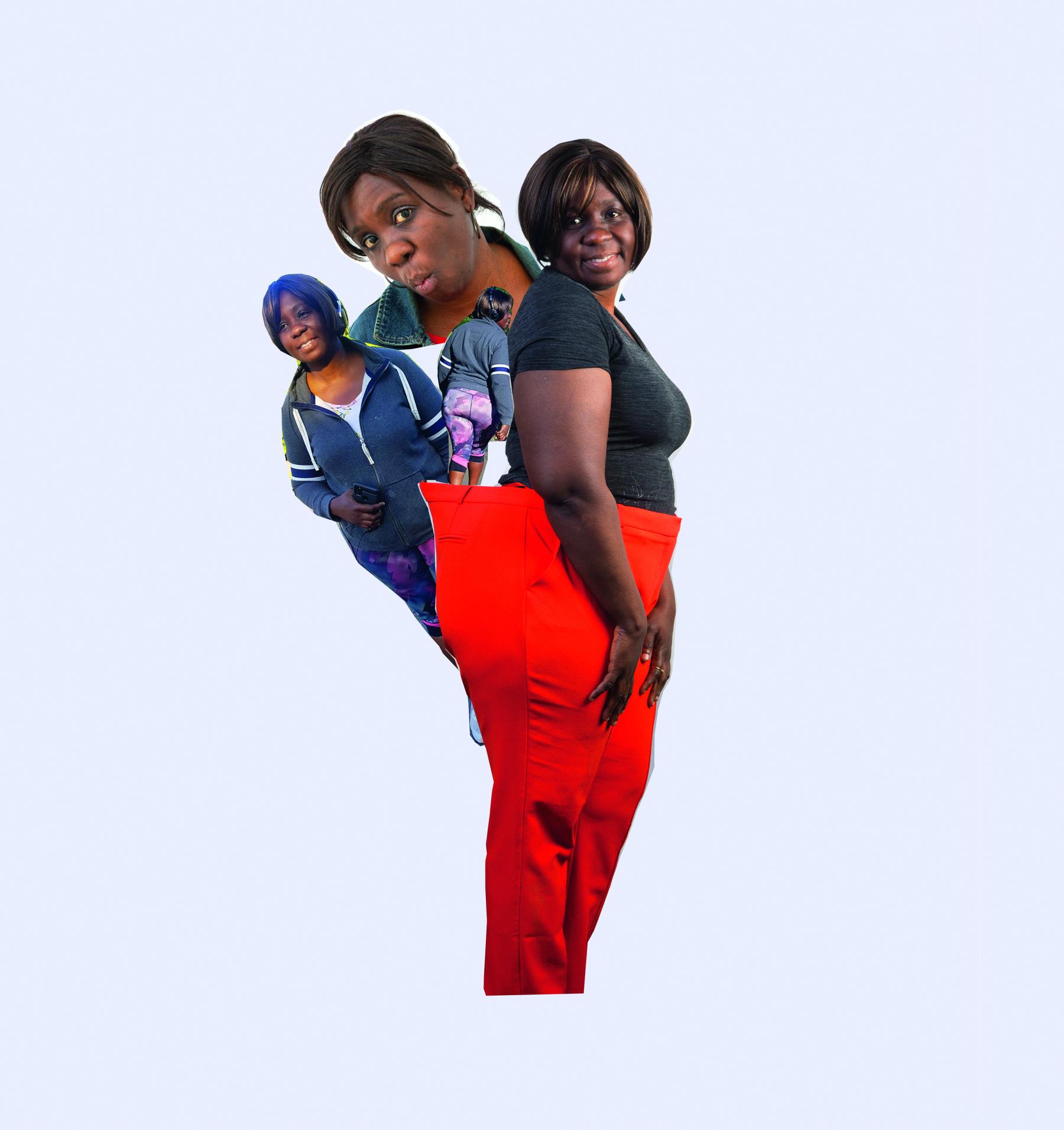
Hannah from the project Putting Ourselves in the Picture. (©National Gallery of Scotland and Fast Forward. Image courtesy of Anna Fox.)
Putting Ourselves in the Picture raises questions and promotes challenges based on the knowledge that opportunities in photography (for marginalised women and non-binary photographers) are few and far between. There is an increased need for change in the burgeoning histories of the photography industry, and we must question the white male dominance of this industry since its inception. We also had support from camera companies who provided cameras and from other local organisations providing different equipment. The exhibition at the Chennai Photo Biennale foregrounds the work made in Part 1 of the project. In this part, our mentors at the five partner organisations worked directly with the women refugee and migrant participants over eighteen months. This was during the pandemic, so most of the time we were meeting online and seeing the work through presentations given by the partners and mentors. I worked closely with one participant, Vicki, who had moved from Bradford (where Impressions Gallery is based) to London and so had become separated from the group at Impressions. Vicki had an incredibly difficult journey from Africa to the UK as someone who was trafficked. Although she now has her right to stay in the UK, she still does not have a home. She is living in one room of a small hotel under Heathrow airport with her two small sons who are not yet at school. Her life is tough, and she has used photography to document her travels through the city with her sons and some of their life in the hotel. I was mesmerised by her work and her ability to capture thoughtful scenes recounting their experiences. There is an amazing combination of text and image in one of her works as her son gazes wistfully at a glamorous shop window while Daniel Craig blasts a gunshot over his head, and then the text in the next image reads, “We’ll help put your money where your mind is!”— It is an observation of capitalism in action and it is terrifying. We wanted the refugee and migrant women and non-binary people to be able to tell their own stories rather than have the media place them as victims. Their work finally culminated in a publication, a series of short videos with the participants, a series of podcasts made with the partners and a series of exhibitions in each location.
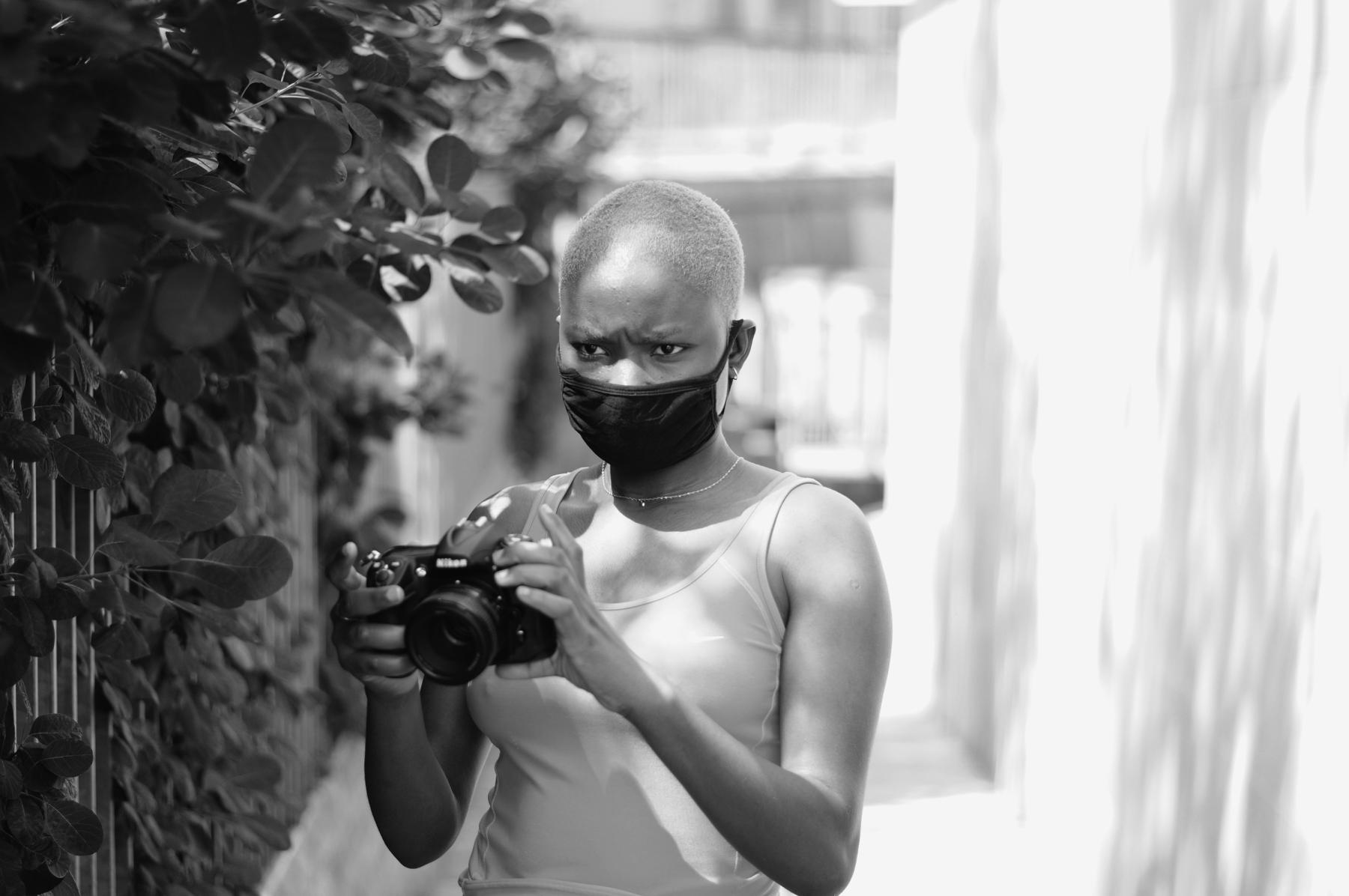
Josiane from Putting Ourselves in the Picture. (© Impressions Gallery and Fast Forward. Image courtesy of Anna Fox.)
UD: You had a community in New York in the 1970s and London in the ’80s and documented them on the streets and in their homes. You also documented queer people in Delhi. What kind of community did you have in the city in the early 2000s?
Sunil Gupta: I moved to London because I met a guy, and I moved to Delhi because I met a guy (laughs). In Delhi, by the time I came in with my suitcase, he had lost interest. But then, I was in Delhi; I thought, now I have to stay. I was there for seven years. In London, I fit in as another migrant of colour from India. But here, finding a community was purely by accident. There were social networks that were coming out of a queer group that was based in JNU at that time. They were coming out of grad school holding monthly meetings on campus to show videos and starting debates on sexuality—all of which was working very well. So, they decided to move it into the city.
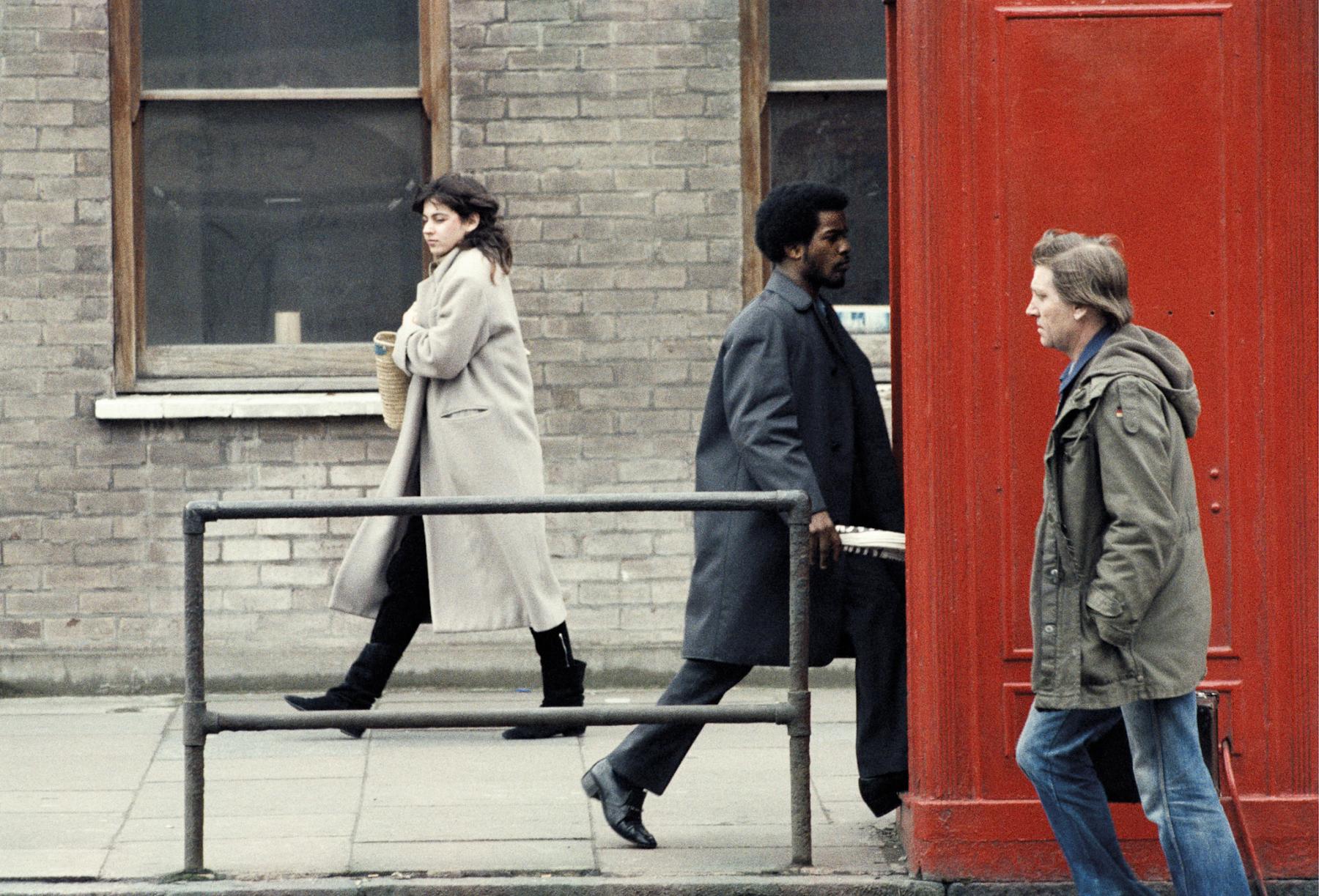
From the series London 1982. (Sunil Gupta. 1982. Image courtesy of the artist.)
In 2004, Radhika Sen, a friend of mine who ran one of the first photo agencies in Delhi, and with whom I had worked with for many years, said, “Let’s do a show!” I said, “But they do not want to show my gay work.” She said, “No, they are ready. Let me organise it.” She put together this exhibition at a visual art gallery, where she showed Exiles and From Here to Eternity, which was about AIDS. There was a courtyard next to it and some rooms, so what she cleverly did was that she organised a series of movies to be shown in the rooms there. One series was coming from the government—from public health education around HIV—short videos about keeping yourself safe, safer sex, etc. But the scripts were driven by government messaging, and the acting was very wooden. So, Radhika met these university students and asked them to curate a series of films. They organised a movie series to accompany my show, and we decided to create a queer space in the courtyard. So, in the afternoons, between the screenings and the show, there would be some snacks and tea, and people would just gather. And that is how I met them. And they said, “Why don’t you join the group?” I said, “Are you sure? I am really old, you know. I am older than your parents.” But I joined, and it gave me an LGBT network in Delhi. They were young—aged twenty onwards. I went to somebody’s twentieth birthday party! So, in a way, it was great for me—I was in my fifties then, and I could relive my youth. It was like going back to when I was seventeen-years-old. I heard about life from their point of view, and that is what made me do Mr. Malhotra’s Party.
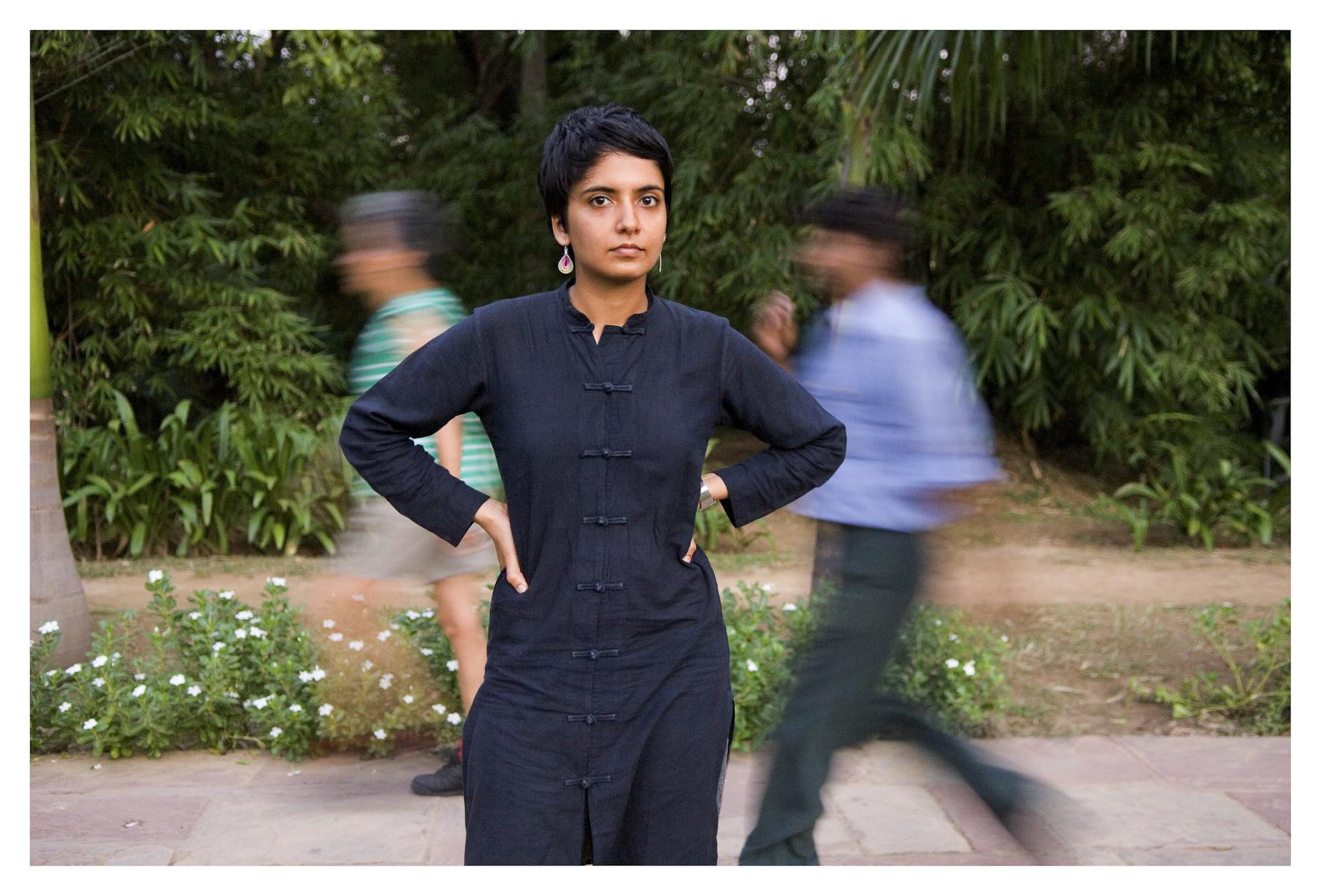
"Anokhi", from the series Mr. Malhotra's Party. (Sunil Gupta. 2007-12. Image courtesy of the artist.)
My generation had completely given up believing that anything would change. Timeless India, nothing changes—they had just accepted it for what it was. But this lot, they were not happy; they wanted it to change, and they were not going wait—they wanted it to happen now. They were doing what they could do by getting all kinds of workshops and discussions going. I think people forget that behind a changing of the law—a slightly remote thing that happens in the Supreme Court and Parliament—what had happened for a good fifteen to twenty years before the law changed was that there were always workshops—on campuses anyway. There was a lot of discussion that spilled out into the media after the Pushkin Chandra murder.
And then they said, “We are going to have a march.” They organised the Pride March. When all those debates happened around Section 377 and AIDS, I would sometimes be put forward because I was over fifty and could wear a tie and look very respectable. Also, my name is Sunil Gupta, and I can speak about these issues in Hindi. So, I did some TV debates. I had a kind of role, and I was quite proud of that. So that is how I met them, and later they became my models. As part of their cultural activities, I ran a workshop for them. We met every week in my flat, and I gave them assignments to do. We looked at pictures, and then the whole idea of Mr. Malhotra’s Party came up. I thought I needed to update Exiles, which was a lived picture of Indian gays stuck in exile—they were all in hiding. But these people were not in hiding. I thought, let's look at the geography and shoot them where they lived or they worked—all around Delhi and in some recognisable places. What was interesting was that people did not mind—because this scenario was before the internet, so they felt secure. There was no art photography, and the only kinds of photography that existed in India at that time were either wedding photography, magazine photography or advertising photography. Nobody thought these party pictures would appear anywhere. It was just for fun, and they would be circulated privately—for each other. One of the things we did as a group was to go out a lot. We often went disco dancing. I suddenly began to attract attention because I was older, lived in GK and looked very privileged. People offered to blackmail me; people offered to sell themselves to me. So, I got into the space thinking, “Ah! This is my tribe!” But they did not think that. I just stood out too much, but I did not understand that fully initially.
.jpg)
From the series Dissent and Desire. (Sunil Gupta and Charan Singh. 2018. Image courtesy of the artists.)
I met another group of people through the HIV Network. Because I was HIV positive, I immediately followed up on what was happening in the NGO world. I had met Anjali Gopalan at NAZ. Previously, I had given a talk at NAZ in South Delhi, which was for an English language group that they set up—a gay men’s group. So, they were all English-speaking, I guess slightly elite. I saw that now Anjali had also set up a Hindi-speaking group for low-income people in Lajpat Nagar, separately. I met Charan (Singh) there, and he comes from a low-income background, but he had spent ten years organising in slums in Delhi, so he knew them well. And some came from Charan’s network from East Delhi. He introduced me to all of them, and some of them also ended up in the pictures. I remember it was an eye-opener for me because I had never been there otherwise. He was actually very critical that my project was very elite. So, we began to expand it that way.
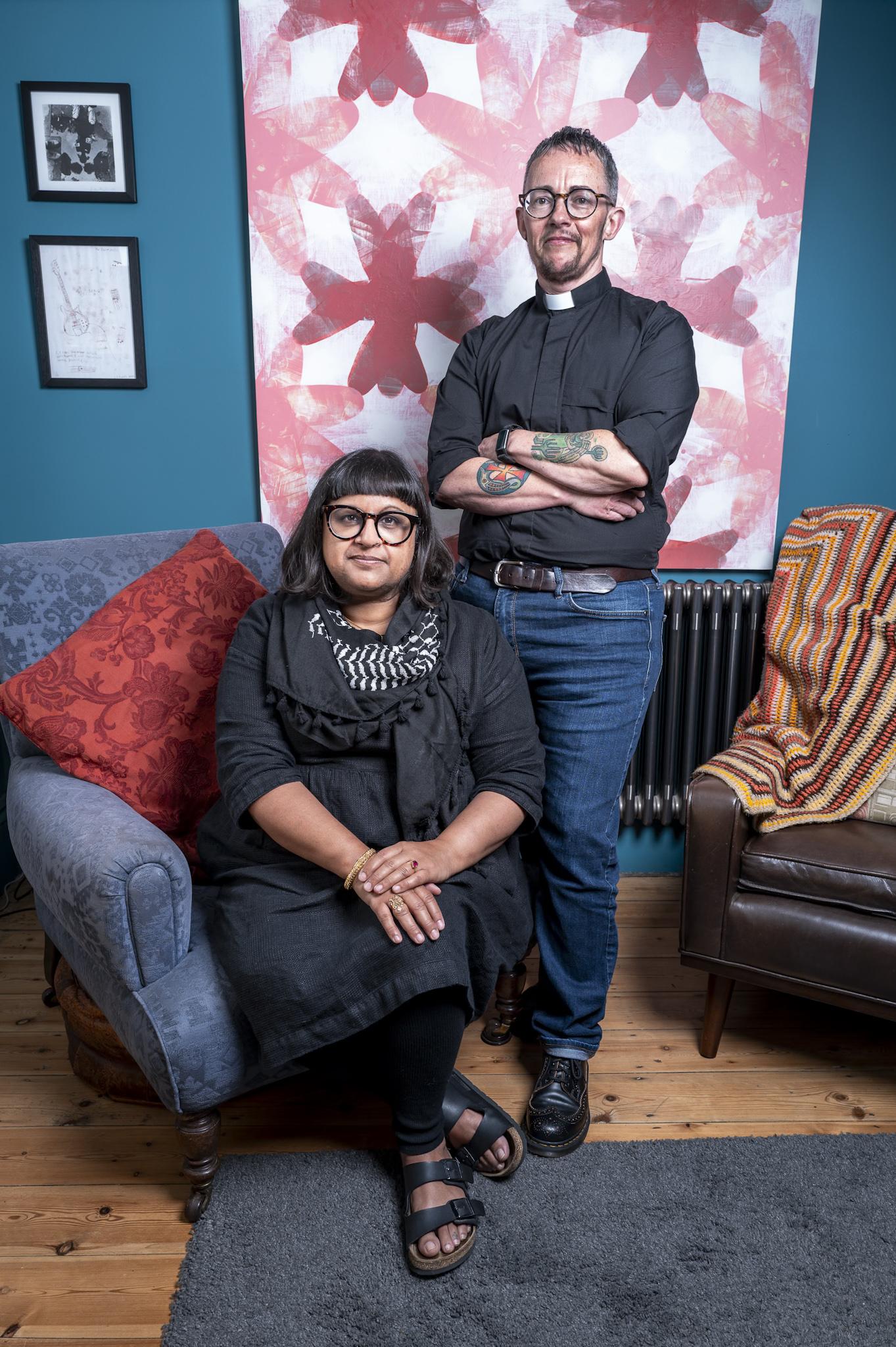
Nazmia and Grey from the series Lovers, Unlimited. (Sunil Gupta and Charan Singh. 2024. Image courtesy of the artists.)
UD: How was the prison space you worked with? How did you see community building in that space?
T.M. Krishna: Even before COVID, members of Project 39A and I were talking about the idea of providing access to art within prisons and the importance of doing that. The project came to fruition only after COVID, when we worked with the Puzhal authorities. The principle and philosophy behind it was that we believed that access to art needs to be there for everybody, including people within prisons. We did not think of it as a therapeutic programme but more as a form of self-expression. It was also to reimagine the idea of a prison. Because in India, going to prison is not enough; you are further punished within the environment in the way things are denied to you and the way things are restricted from you. So, the courts may send somebody to prison for a crime—which is the punishment. But then punishments are added on within the prison world. We imagined Art in Prisons as a way of asking questions about that. We—who live outside those high prison walls—need to rethink our impressions of what a prison is and who the people within are. They are people like you and me. They are people who made a mistake, a momentary mistake, and for whatever reason they find themselves within a prison, which is the punishment the legal and justice system has given them. But they are like you and me. We think the prison is a place away from society or should be away from society, but I believe that the prison is also part of society. It is part of all of us. Let's say, somebody is sent out on bail and works in a shop and you go to that shop, where you meet that person. How is that person who is on bail serving you in a shop different from another person who has never been to prison? To you and me, actually, they are the same. Rethinking our preconceived notions about the prison is very important because that will transform the way we think about justice, hardships that are imposed on prisoners and things that are denied.
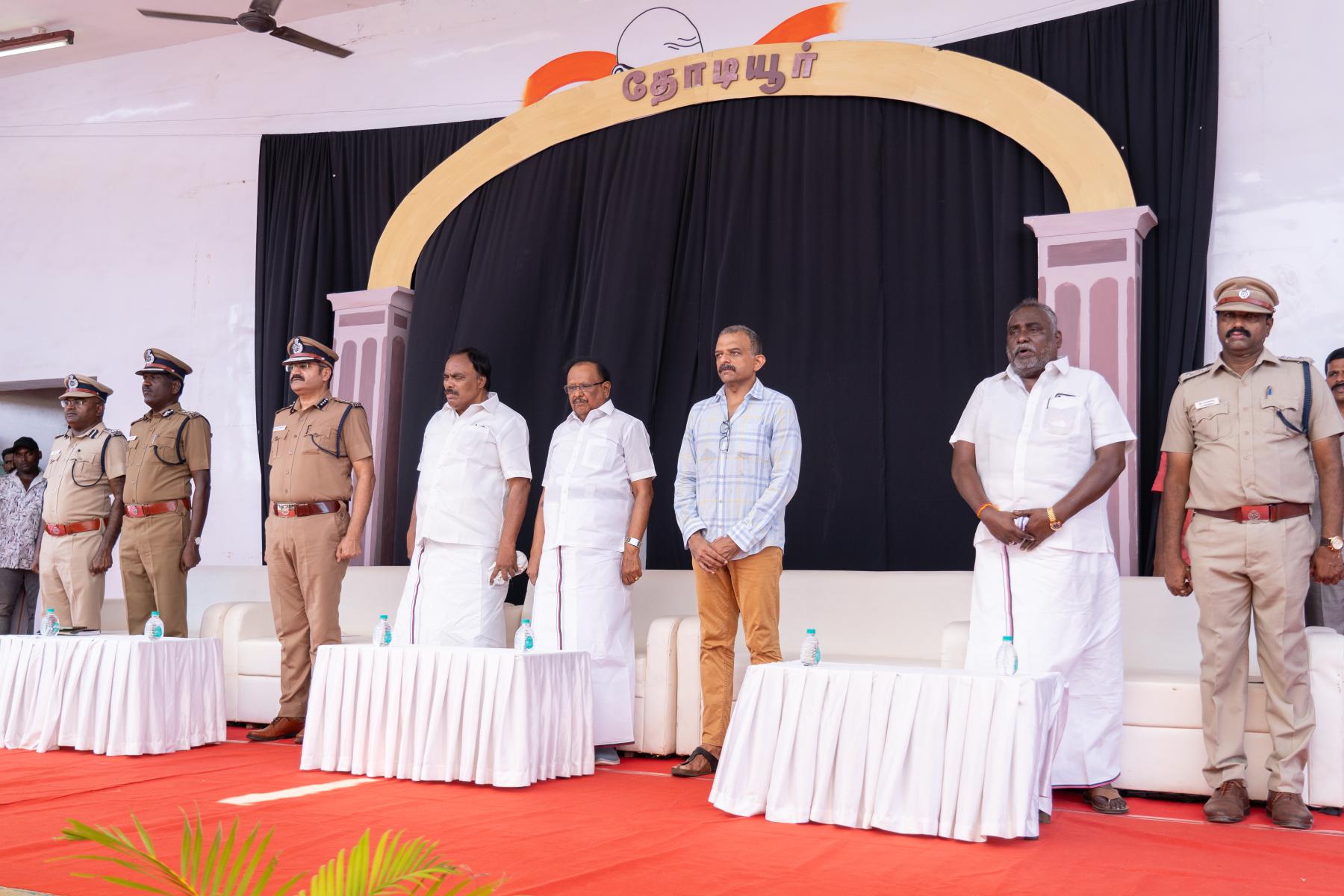
At Puzhal Prison. (Image courtesy of Habiba Begum)
The Puzhal prison is a very large space. We had to follow all the basic rules through which access was provided. Inmates have various activities that they do, which fall under cottage industries, where they are employed during the day. We asked them to give us a block, which was unused, and we used that block where all the art programmes happened. In fact, the inmates themselves painted the Visual Arts room quite beautifully and transformed it. We also had the prison authorities purchase instruments such as drum kits and keyboards, as well as a pottery wheel for making pots and ceramic work. It was an eight-month course and we had different forms of music—Gaana music, Nadaswaram and Tamil, Carnatic vocal and light music, which is film music. There was also parai attam, which is a traditional folk performance. There was one theatre production that they all worked towards, and in preparation they learnt theatre exercises to utter dialogues, act and dance. Visual arts included sketching, different kinds of painting, ceramic work, pottery, cyanotype, etc. We also had a registry for the classes that were conducted. So, we knew who the facilitators were, who went there, how many students there were, how many of them attended, people who did not, and then we would find out why they did. So, there was a lot of participation that also came from the prison authorities, which was helpful. The programme began with an audition process, from which approximately sixty inmates were chosen to participate. Some of them were released during the programme, but the most beautiful thing is that, when the final performance happened, some of them wanted to come back and perform.
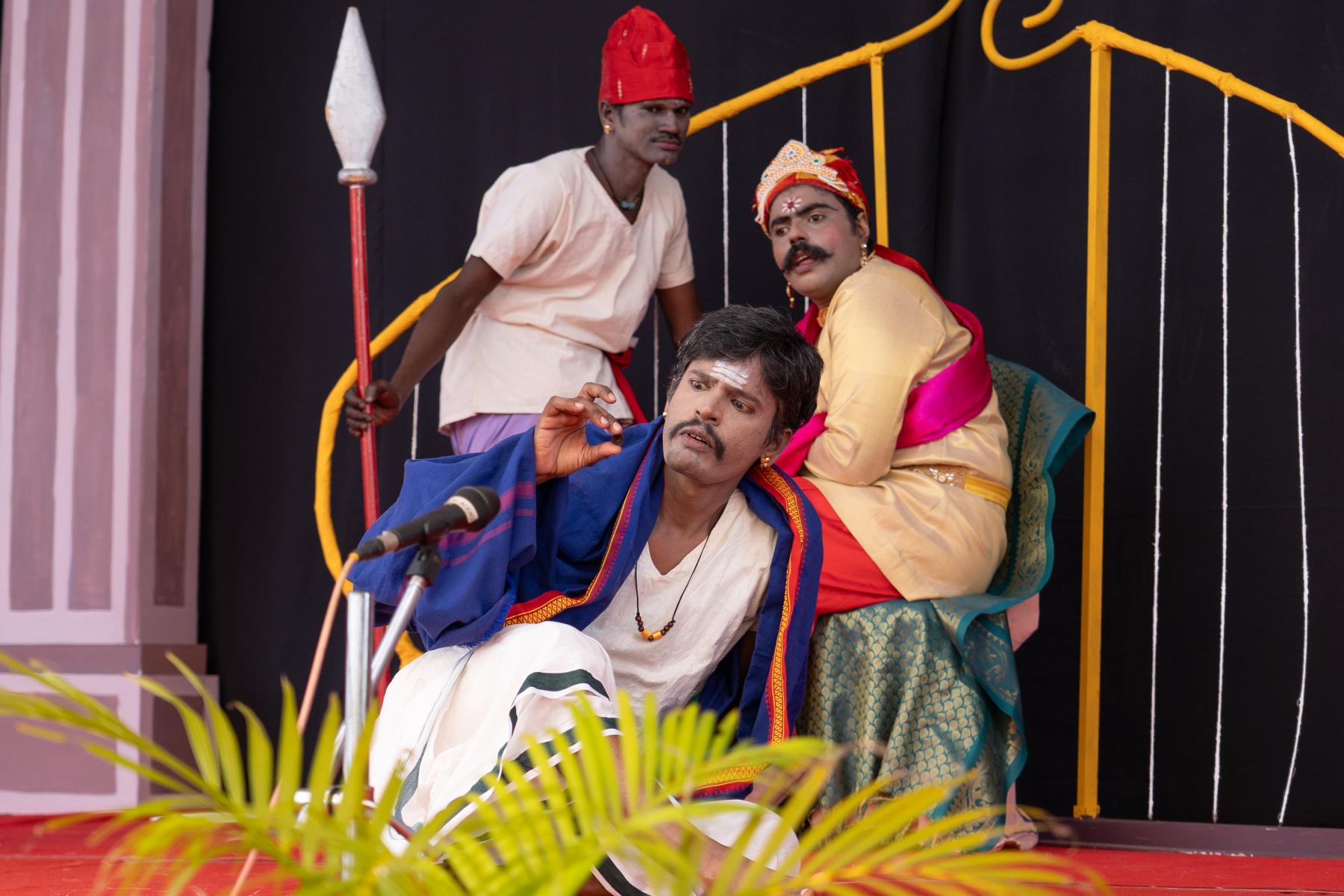
A performance as part of the Art in Prisons project. (Image courtesy of Habiba Begum)
To learn more about the artists and themes featured as part of the Chennai Photo Biennale this year, read Kshiraja’s short interviews with artists whose practices explore themes of myth, ritual and identity, Anoushka Antonnette Mathews' short interviews with artists whose practices explore themes of bodies and landscapes, Kshiraja’s short interviews with artists whose practices explore themes of landscape and history, Upasana Das’ short interviews with artists whose practices explore themes of power and representation and Mallika Visvanathan’s short interviews with the curators of the primary shows.



